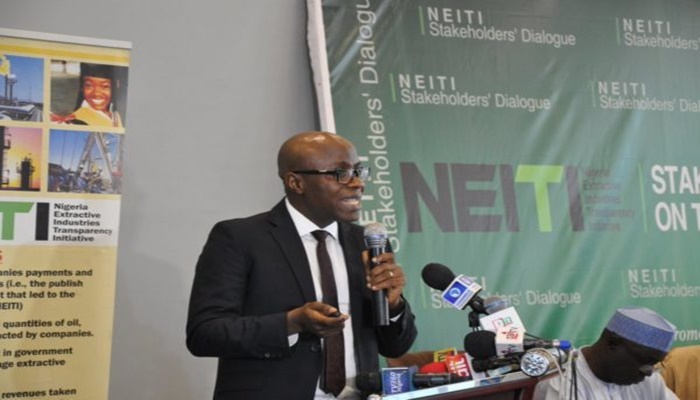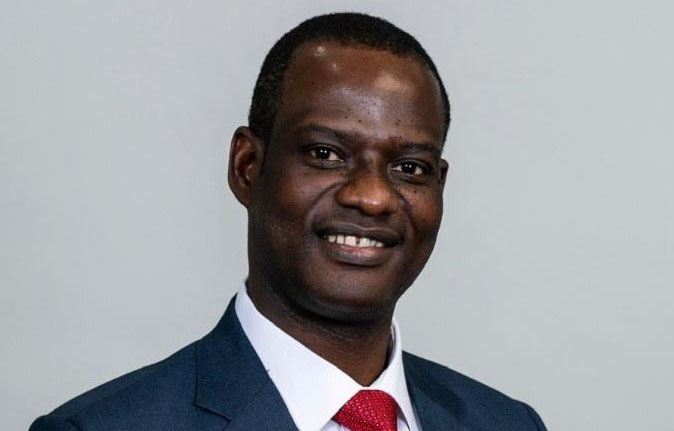
The Nigeria Extractive Industries Transparency Initiative (NEITI) in its latest quarterly review has disclosed that the Federation Allocation Account Committee (FAAC) disbursed N8.52 trillion to the three tiers of government and other beneficiaries in 2018.
It added that the figure makes it the first time since 2014, that disbursements would exceed N2 trillion in three consecutive quarters.
NEITI noted that the N8.52 trillion also represents 32.8 per cent increase when compared to N6.418 trillion disbursed in 2017 and 67.1 per cent higher than N5.1 trillion shared in 2016.
A further breakdown of the FAAC disbursements showed that the Federal Government received N3.483 trillion in 2018 representing 41 per cent while the 36 states received N2.85 trillion, representing 33.4 per cent and the 774 local governments got N1.667 trillion, representing 19.6 per cent.
On the states’ share of the FAAC disbursements, the review disclosed that five states received higher than N100 billion each in 2018. The States were Lagos (N119 billion), Bayelsa (N153.1 billion), Rivers (N172.6 billion), Akwa Ibom (N202.4 billion), Delta (N213.6 billion).
NEITI further disclosed that 23 states received less than N60 billion each as total FAAC receipts in 2018.
A break down shows that Cross River, Ekiti and Ogun states received N37 billion, N39.3 billion and N39.6 billion respectively. Eight states namely: Zamfara, Gombe, Plateau, Kwara, Ebonyi, Nasarawa, Taraba, and Adamawa, received between N40 billion and N49.9 billion.
A total of 12 states received between N50 billion and N59.9 billion: Yobe, Enugu, Kogi, Bauchi, Imo, Sokoto, Kebbi, Anambra, Abia, Benue, Niger and
Oyo. In addition, six states (Jigawa, Katsina, Borno, Ondo, Kaduna, and Edo) received between N60 billion and N69.9 billion. It further disclosed that Kano State received a total of N84.2 billion in 2018.
A close look at the disbursements to states indicated a wide disparity, with Osun State receiving the lowest net allocation of N22.8billion while Delta State received the highest net allocation of N213.6 billion, ‘‘meaning net disbursement to Delta State was 935% of Osun State’s,” the NEITI review added.
NEITI added that it analysed disbursements from FAAC in 2018 and made revenue projections for 2019.
It also observed that government revenues have continued to be on the increase since 2017. “The rebound in federation revenue continued as a result of increases in both oil and non-oil revenue”, the review stated.
A quarterly breakdown of disbursements in 2018 showed a steady increase in the amount disbursed throughout the year. For instance, in the first quarter of the year, FAAC shared N1.938 trillion, while N2.008 trillion was disbursed in the second quarter. Disbursements in the third and fourth quarters were N2.278 trillion and N2.299 trillion respectively.
The NEITI review disclosed: “there were three consecutive quarters in 2018 when total disbursements exceeded N2 trillion”, observing that the last time this happened was in the third quarter of 2014.
The publication also stated: “with the exception of the third quarter of 2017, the N2.299 trillion disbursed in the fourth quarter of 2018 was the highest quarterly disbursement since the second quarter of 2014”.
The NEITI publication however noted with concern that despite the upward trajectory in FAAC disbursements to the three tiers of government, the disbursements were inadequate to meet states’ budgetary requirements.
“Clearly, there was no state that could adequately finance its budget solely from FAAC disbursements. There were three states where FAAC disbursements were more than 50% of their budgets: Delta, Enugu, Yobe. For all other states, disbursements were less than 50% of their budgets”, the NEITI publication noted.
On internally generated revenues (IGR), the NEITI review further remarked that it was highly unlikely that IGR would be able to make up for the shortfall in FAAC disbursements to states.
From the review, only four states (Cross River, Lagos, Ogun and Rivers) had estimated IGR that was more than 50% of their FAAC allocations. Out of these states, only Lagos and Ogun had IGR that was actually higher than their FAAC allocations.
The NEITI review further revealed that estimated IGR in six states (Enugu, Kaduna, Kano, Kwara, Osun, Oyo) was more than 40% of their FAAC allocations. The review noted that for these ten states listed, there is a probability that actual IGR may be sufficient to address the budgetary gaps in FAAC disbursements.
On revenue projection in 2019, NEITI Quarterly Review predicts an upward trend in revenue receipts into the government coffers from oil and gas sector as well as the attendant increases in FAAC disbursements.
“FAAC disbursements will increase further in 2019. This is largely due to expected increase in Nigeria’s oil production and further consolidation of efforts by OPEC to keep oil prices from falling”, the NEITI publication stated.
“With the concerted efforts by the Organisation of Petroleum Exporting Countries to limit oil production, coupled with sanctions on Iran and Venezuela oil exports, it is expected that oil prices will not fall to the very low levels experienced from 2014 to 2017”, it further explained.
At the domestic level, NEITI is optimistic that oil production will increase in 2019 given the take-off of Egina offshore field, which started production in December 2018, with optimum production capacity of 200,000 barrels per day.






